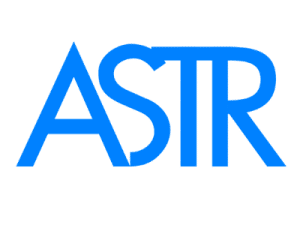The Problem with High-Fat Keto Diets and What to Eat Instead
The Problem with High-Fat Keto Diets and What to Eat Instead
The ketogenic (keto) diet promises rapid weight loss and improved energy by shifting the body into a fat-burning state. While it can offer short-term benefits, long-term high-fat keto diets often create serious health problems—especially when saturated fat and animal products dominate the plate.
Let’s examine the hidden risks of the high-fat keto trend and introduce a safer, sustainable alternative that still promotes energy, healing, and metabolic balance.
Why High-Fat Keto Diets Can Be Harmful
1. Liver Damage and Fatty Liver Risk
Ironically, while keto is often promoted as a weight loss solution, it may contribute to non-alcoholic fatty liver disease (NAFLD). Studies show high-fat, low-carb diets can cause liver fat accumulation and impair liver function (Jou et al., 2008).
2. Nutrient Deficiencies
Eliminating entire food groups—especially fruits, whole grains, and legumes—can lead to deficiencies in vitamins C, E, magnesium, fiber, and polyphenols, all essential for immune and cellular health.
3. Increased Inflammation
While keto can initially reduce inflammation by removing sugar, long-term high intake of animal fat, dairy, and processed meats increases pro-inflammatory markers, oxidative stress, and gut permeability (Zinöcker & Lindseth, 2018).
4. Poor Gut Health
Fiber is essential for a healthy gut microbiome. Since the keto diet limits fiber-rich foods like legumes, whole grains, and many fruits, it disrupts the gut environment, leading to bloating, constipation, and weakened immunity (David et al., 2014).
5. Elevated Heart Disease Risk
Diets high in saturated fat and cholesterol can raise LDL (“bad”) cholesterol and TMAO levels, increasing the risk of heart disease—even if weight temporarily drops (Koeth et al., 2013).
What to Eat Instead: The ASTR Diet
Dr. Joseph Jacobs developed the ASTR Diet to provide a holistic, sustainable alternative to extreme eating plans. The ASTR Diet emphasizes healing foods that support the liver, gut, brain, and immune system—without restricting carbs to dangerous levels.
ASTR Diet Highlights:
- Anti-inflammatory: Packed with antioxidants, omega-3s, and clean plant-based nutrients
- Sustainable: Focused on real, whole foods—no extremes
- Toxin-free: Eliminates artificial ingredients, hormone disruptors, and inflammatory fats
- Restorative: Includes balanced macronutrients and intermittent fasting to support metabolic health
The ASTR Diet includes:
- Organic vegetables and fiber-rich fruits
- Gluten-free, anti-inflammatory grains
- Clean proteins like wild-caught fish and legumes
- Healthy fats like olive oil, avocado, and nuts
- Herbs and teas that support detoxification
A Better Path to Healing
If you’ve tried keto and still struggle with fatigue, bloating, or health concerns, it may be time to ditch the high-fat hype. The ASTR Diet offers a practical, nourishing, and science-backed approach to healing.
Learn more in Eat to Heal by Dr. Joseph Jacobs: Available on Amazon
Verweise:
- Jou J, et al. (2008). Mechanisms of disease: insights into the pathogenesis of nonalcoholic fatty liver disease. Nat Clin Pract Gastroenterol Hepatol.
- Zinöcker MK & Lindseth IA. (2018). The Western diet–microbiome-host interaction and its role in metabolic disease. Nutrients.
- David LA, et al. (2014). Diet rapidly and reproducibly alters the human gut microbiome. Nature.
- Koeth RA, et al. (2013). Intestinal microbiota metabolism of l-carnitine and cardiovascular risk. N Engl J Med.

